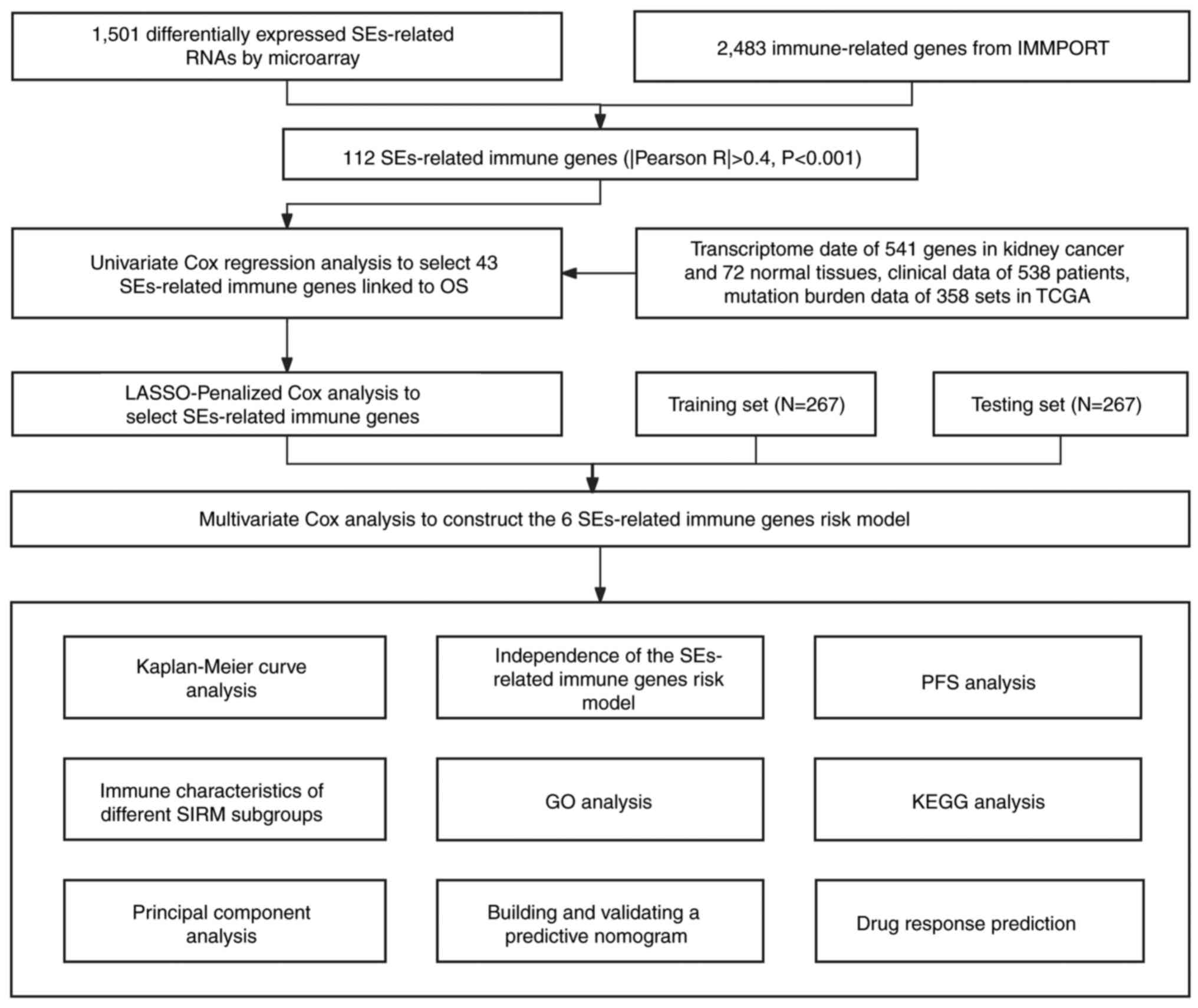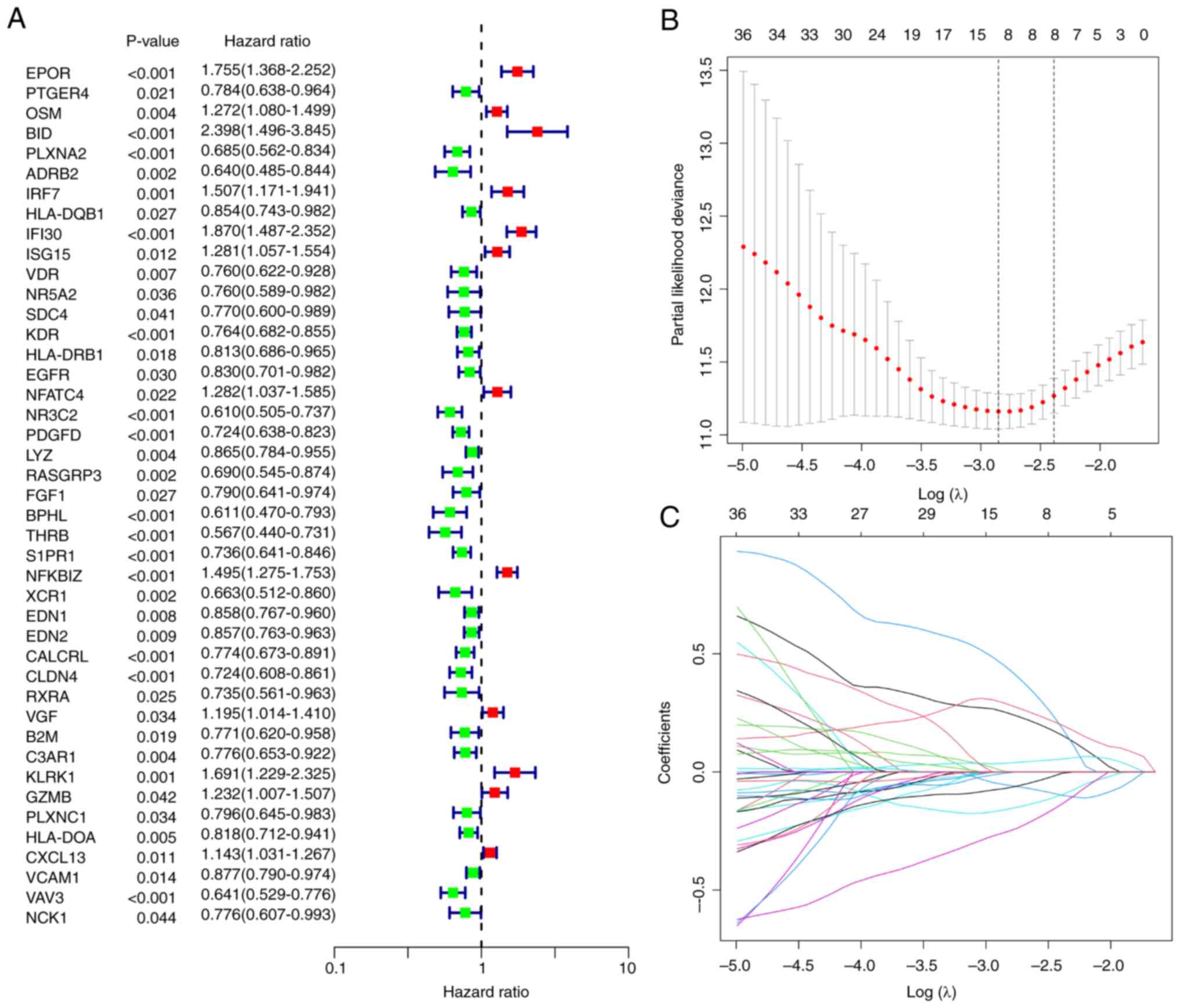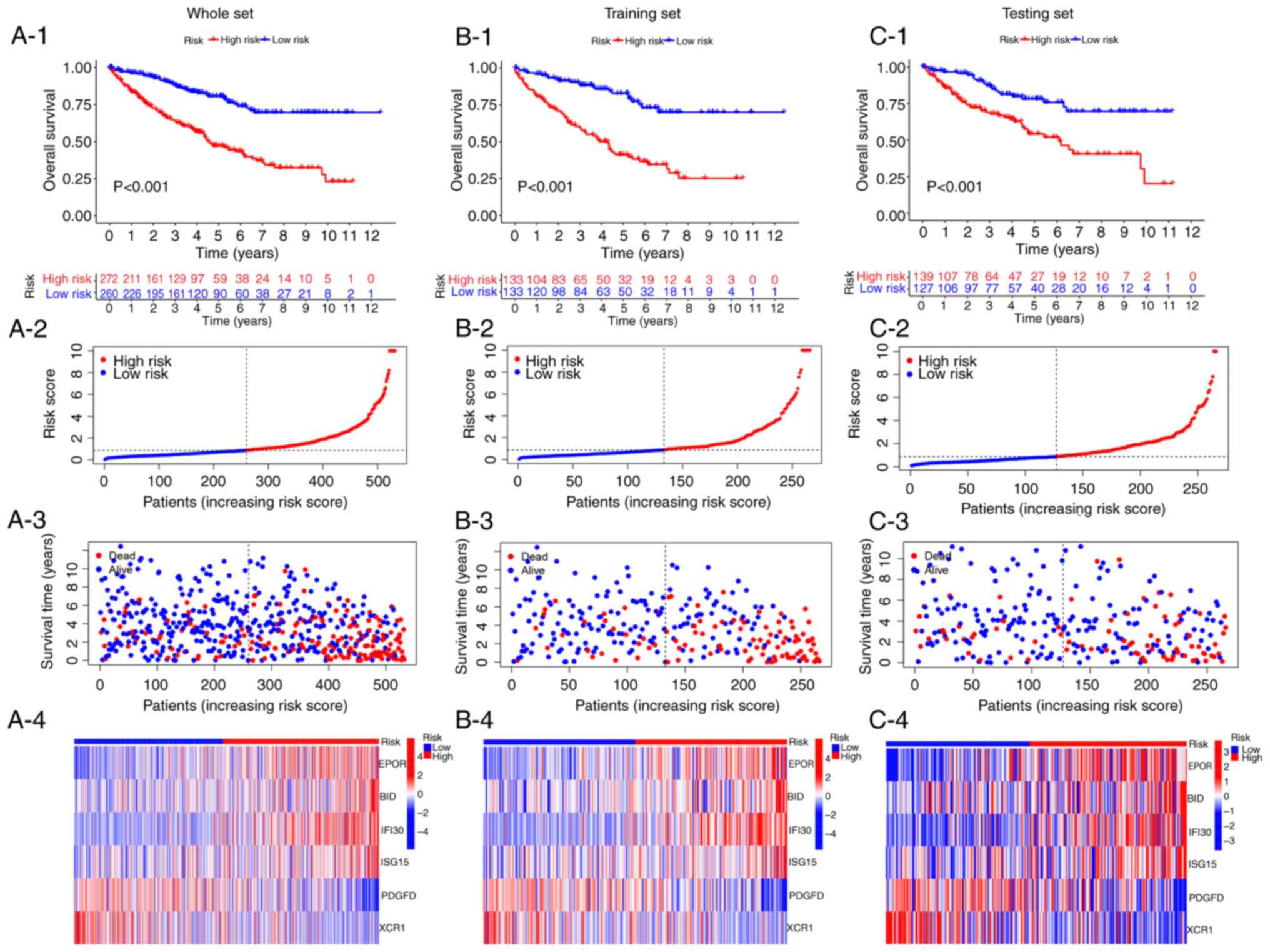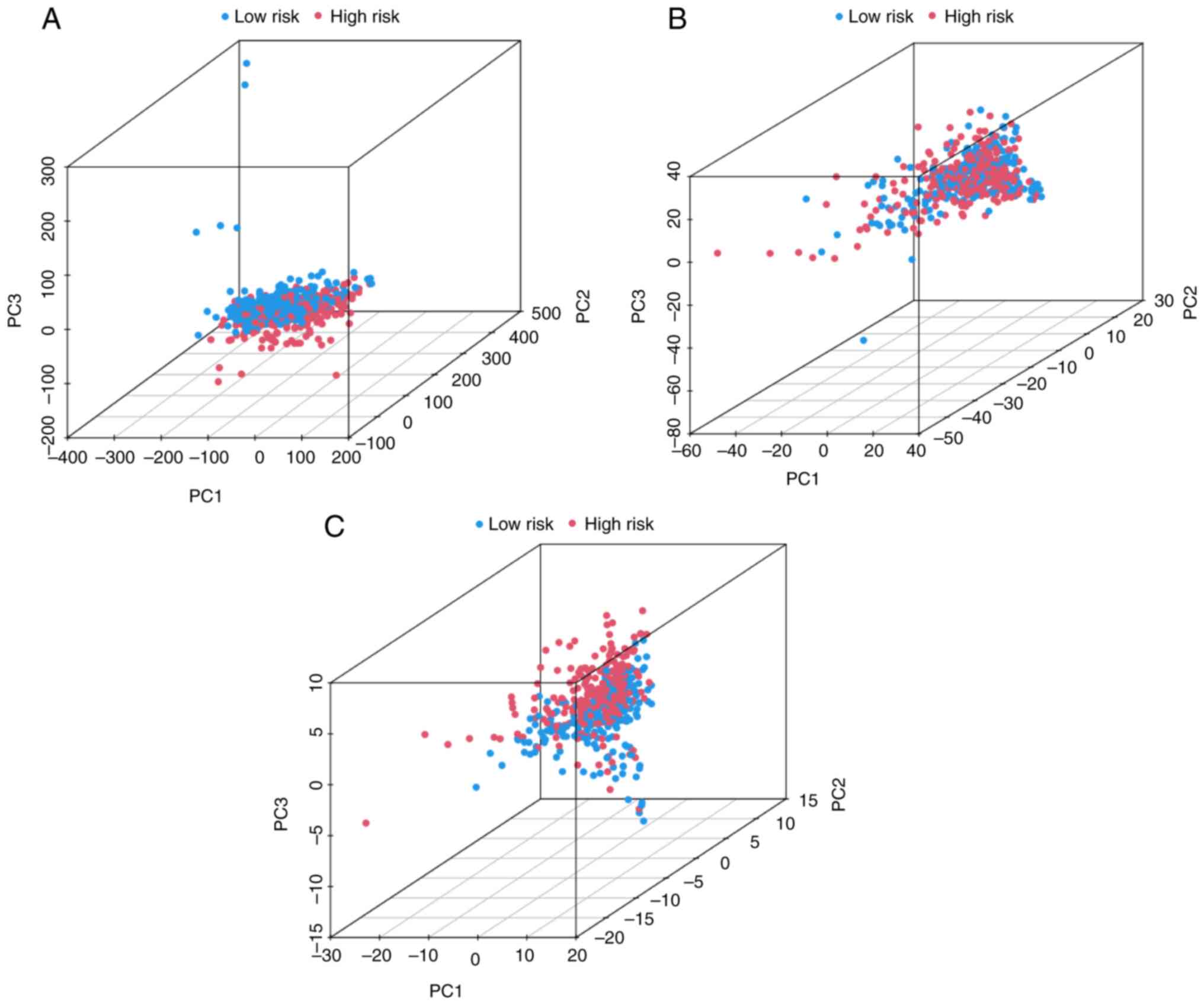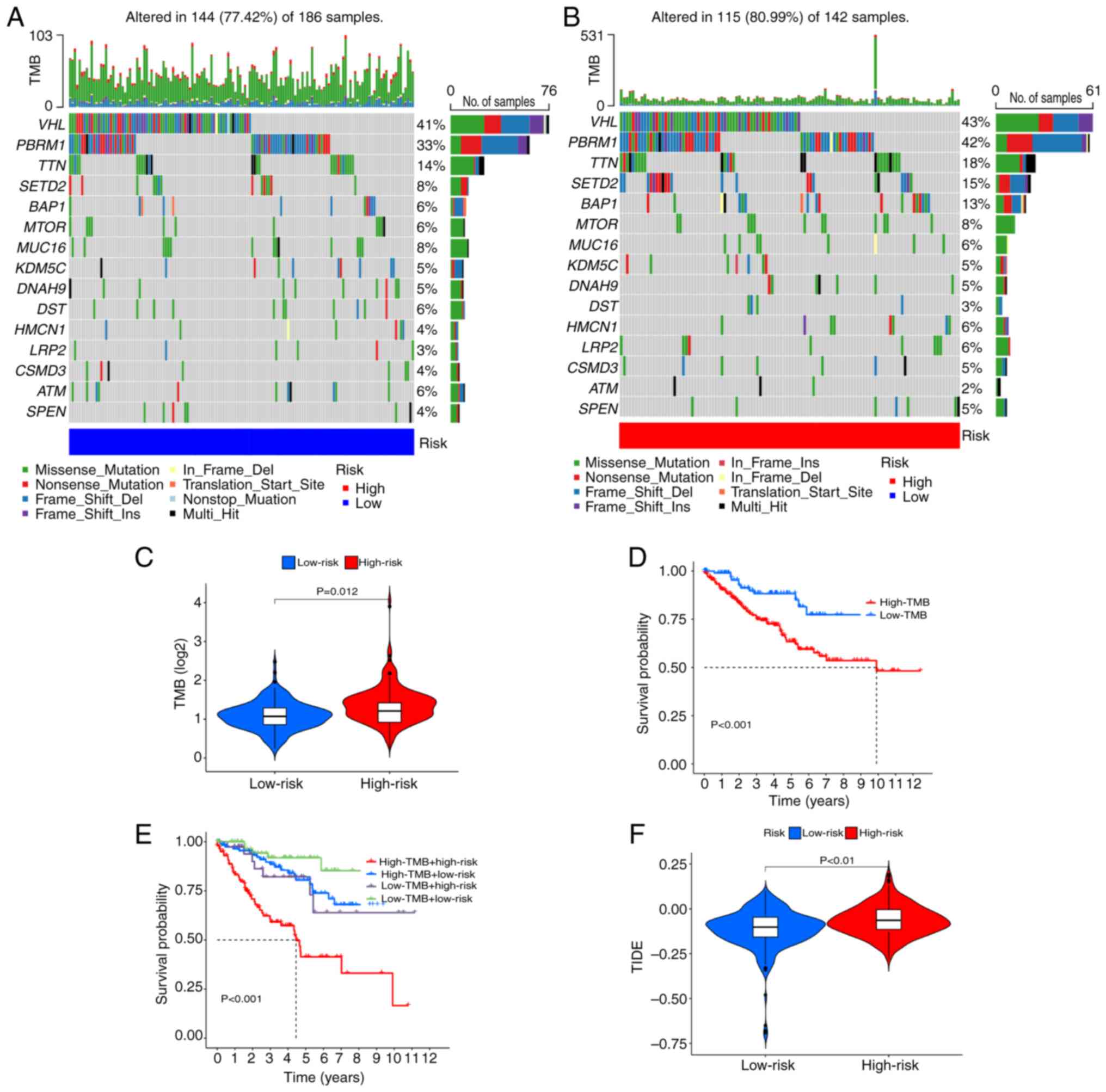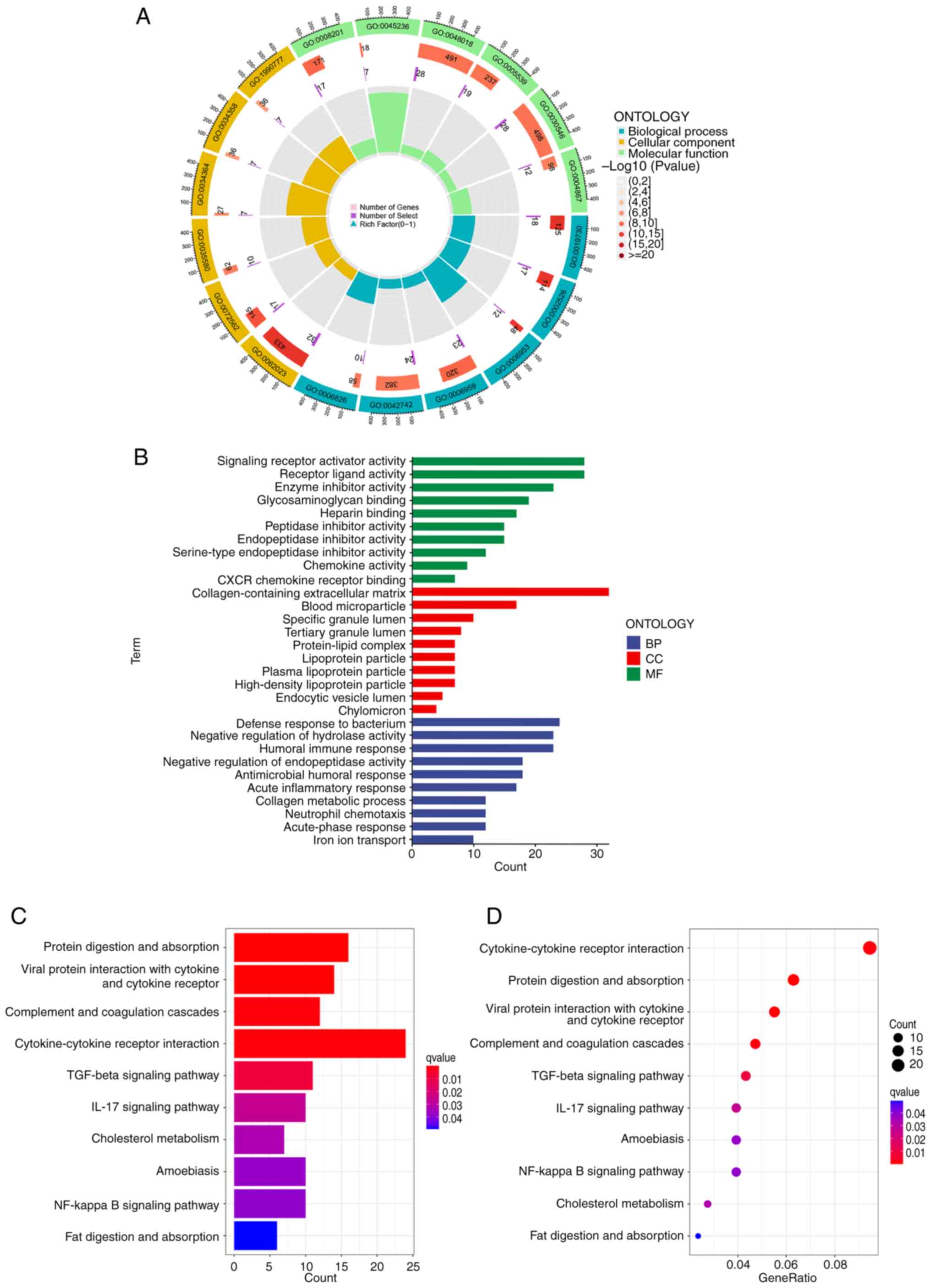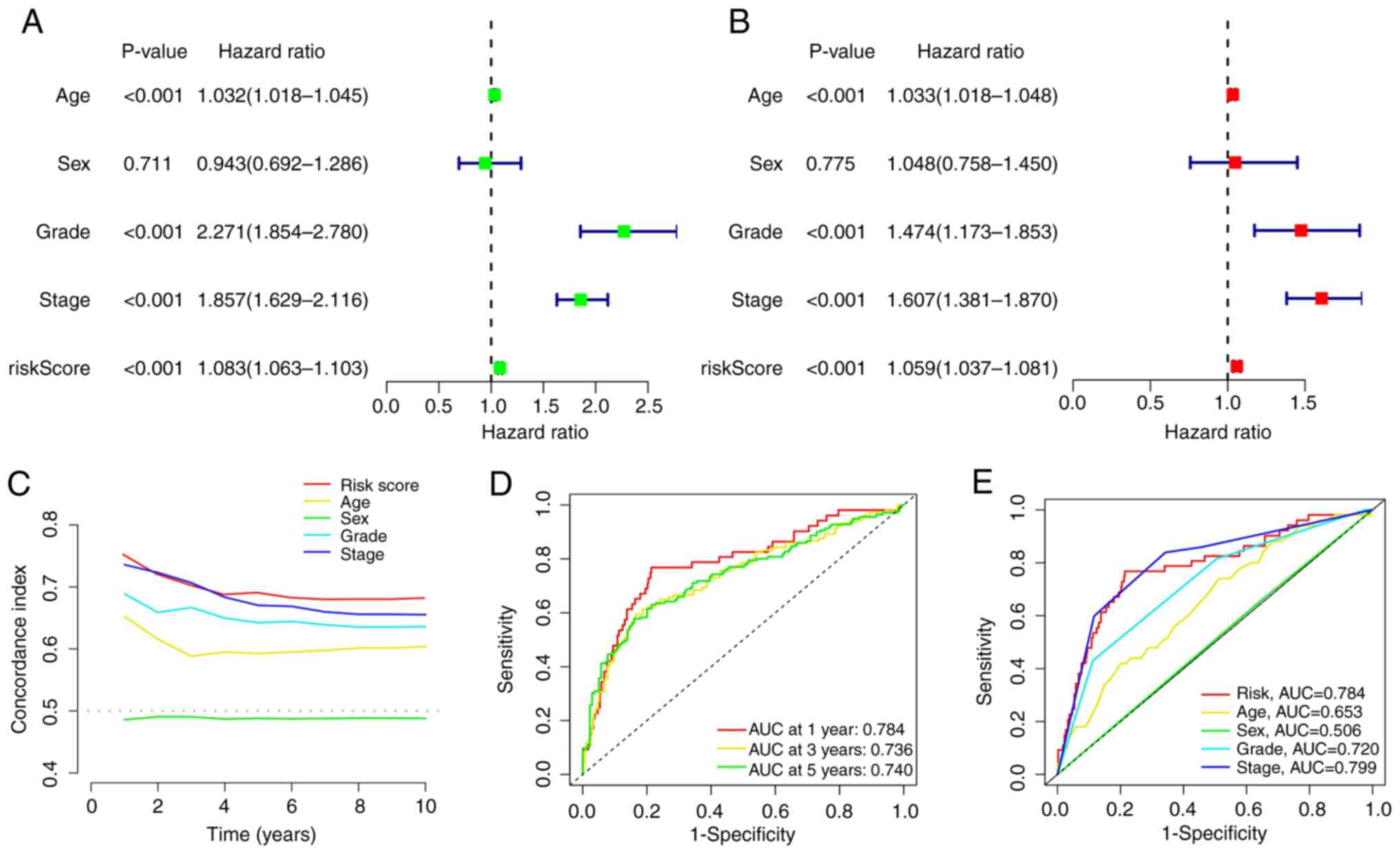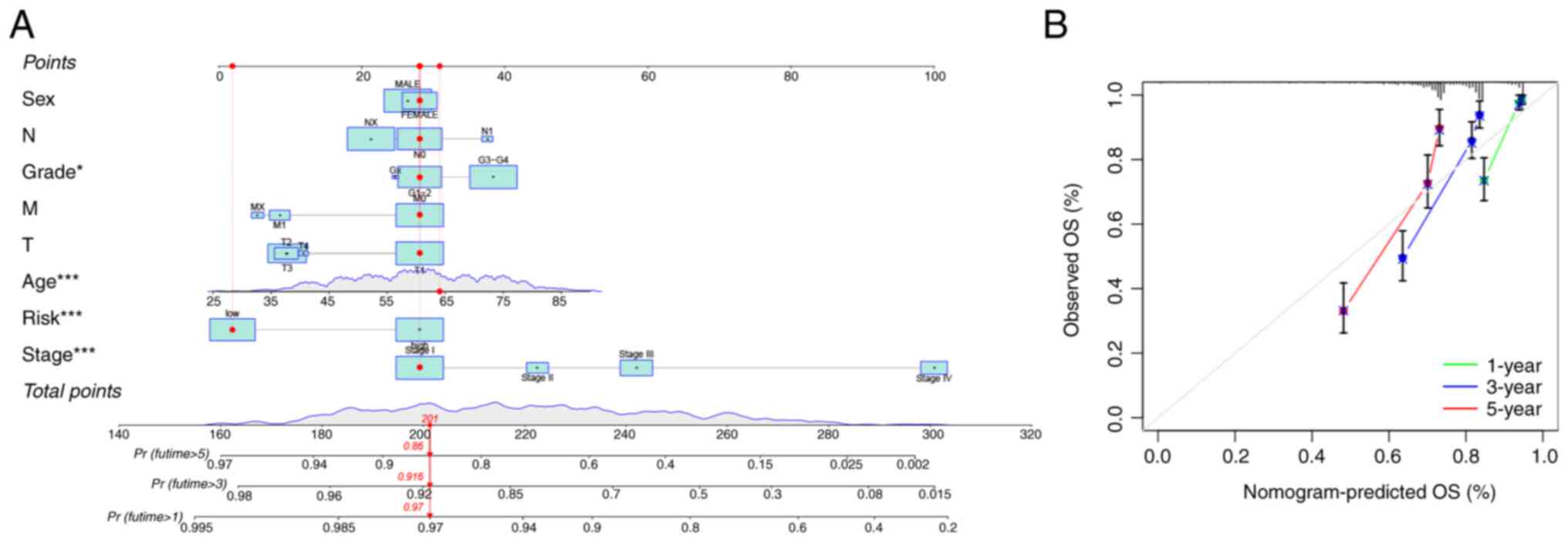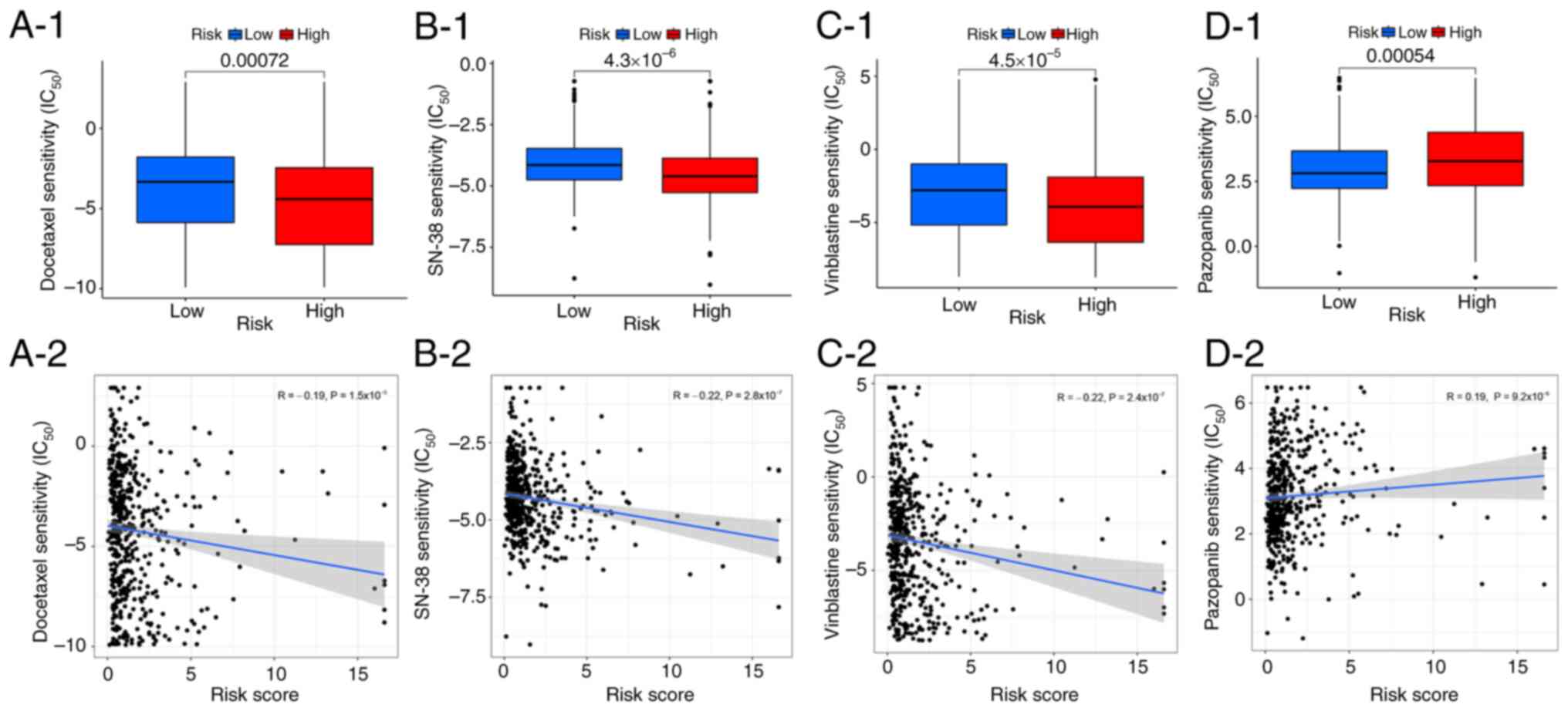|
1
|
Ljungberg B, Albiges L, Abu-Ghanem Y,
Bensalah K, Dabestani S, Fernández-Pello S, Giles RH, Hofmann F,
Hora M, Kuczyk MA, et al: European association of urology
guidelines on renal cell carcinoma: The 2019 update. Eur Urol.
75:799–810. 2019. View Article : Google Scholar : PubMed/NCBI
|
|
2
|
Finelli A, Ismaila N, Bro B, Durack J,
Eggener S, Evans A, Gill I, Graham D, Huang W, Jewett MA, et al:
Management of small renal masses: American society of clinical
oncology clinical practice guideline. J Clin Oncol. 35:668–680.
2017. View Article : Google Scholar : PubMed/NCBI
|
|
3
|
Panne D: The enhanceosome. Curr Opin
Struct Biol. 18:236–242. 2008. View Article : Google Scholar : PubMed/NCBI
|
|
4
|
Spitz F and Furlong EE: Transcription
factors: From enhancer binding to developmental control. Nat Rev
Genet. 13:613–626. 2012. View
Article : Google Scholar : PubMed/NCBI
|
|
5
|
Calo E and Wysocka J: Modification of
enhancer chromatin: What, how, and why. Mol Cell. 49:825–837. 2013.
View Article : Google Scholar : PubMed/NCBI
|
|
6
|
Zhang C, Wei S, Sun WP, Teng K, Dai MM,
Wang FW, Chen JW, Ling H, Ma XD, Feng ZH, et al:
Super-enhancer-driven AJUBA is activated by TCF4 and involved in
epithelial-mesenchymal transition in the progression of
hepatocellular carcinoma. Theranostics. 10:9066–9082. 2020.
View Article : Google Scholar : PubMed/NCBI
|
|
7
|
Nguyen TTT, Zhang Y, Shang E, Shu C,
Torrini C, Zhao J, Bianchetti E, Mela A, Humala N, Mahajan A, et
al: HDAC inhibitors elicit metabolic reprogramming by targeting
super-enhancers in glioblastoma models. J Clin Invest.
130:3699–3716. 2020. View Article : Google Scholar : PubMed/NCBI
|
|
8
|
Betancur PA, Abraham BJ, Yiu YY,
Willingham SB, Khameneh F, Zarnegar M, Kuo AH, McKenna K, Kojima Y,
Leeper NJ, et al: A CD47-associated super-enhancer links
pro-inflammatory signalling to CD47 upregulation in breast cancer.
Nat Commun. 8:148022017. View Article : Google Scholar : PubMed/NCBI
|
|
9
|
Shang E, Nguyen TTT, Shu C, Westhoff MA,
Karpel-Massler G and Siegelin MD: Epigenetic targeting of Mcl-1 is
synthetically lethal with Bcl-xL/Bcl-2 inhibition in model systems
of glioblastoma. Cancers (Basel). 12:21372020. View Article : Google Scholar : PubMed/NCBI
|
|
10
|
Şenbabaoğlu Y, Gejman RS, Winer AG, Liu M,
Van Allen EM, de Velasco G, Miao D, Ostrovnaya I, Drill E, Luna A,
et al: Tumor immune microenvironment characterization in clear cell
renal cell carcinoma identifies prognostic and
immunotherapeutically relevant messenger RNA signatures. Genome
Biol. 17:2312016. View Article : Google Scholar : PubMed/NCBI
|
|
11
|
Escudier B: Emerging immunotherapies for
renal cell carcinoma. Ann Oncol. 23 (Suppl 8):viii35–viii40. 2012.
View Article : Google Scholar : PubMed/NCBI
|
|
12
|
Dunnick NR: Renal cell carcinoma: Staging
and surveillance. Abdom Radiol (NY). 41:1079–1085. 2016. View Article : Google Scholar : PubMed/NCBI
|
|
13
|
Sun C, Mezzadra R and Schumacher TN:
Regulation and function of the PD-L1 checkpoint. Immunity.
48:434–452. 2018. View Article : Google Scholar : PubMed/NCBI
|
|
14
|
Xu Y, Wu Y, Zhang S, Ma P, Jin X, Wang Z,
Yao M, Zhang E, Tao B, Qin Y, et al: A tumor-specific
super-enhancer drives immune evasion by guiding synchronous
expression of PD-L1 and PD-L2. Cell Rep. 29:3435–3447.e4. 2019.
View Article : Google Scholar : PubMed/NCBI
|
|
15
|
Ma P, Jin X, Fan Z, Wang Z, Yue S, Wu C,
Chen S, Wu Y, Chen M, Gu D, et al: Super-enhancer receives signals
from the extracellular matrix to induce PD-L1-mediated immune
evasion via integrin/BRAF/TAK1/ERK/ETV4 signaling. Cancer
Biol Med. 19:669–684. 2021. View Article : Google Scholar : PubMed/NCBI
|
|
16
|
Oh S, Shin S and Janknecht R: ETV1, 4 and
5: An oncogenic subfamily of ETS transcription factors. Biochim
Biophys Acta. 1826:1–12. 2012.PubMed/NCBI
|
|
17
|
Yu D, Yang X, Lin J, Cao Z, Lu C, Yang Z,
Zheng M, Pan R and Cai W: Super-enhancer induced IL-20RA promotes
proliferation/metastasis and immune evasion in colorectal cancer.
Front Oncol. 11:7246552021. View Article : Google Scholar : PubMed/NCBI
|
|
18
|
Li X, Li Y, Yu X and Jin F: Identification
and validation of stemness-related lncRNA prognostic signature for
breast cancer. J Transl Med. 18:3312020. View Article : Google Scholar : PubMed/NCBI
|
|
19
|
Xu F, Huang X, Li Y, Chen Y and Lin L:
m6A-related lncRNAs are potential biomarkers for
predicting prognoses and immune responses in patients with LUAD.
Mol Ther Nucleic Acids. 24:780–791. 2021. View Article : Google Scholar : PubMed/NCBI
|
|
20
|
Xu F, Zhan X, Zheng X, Xu H, Li Y, Huang
X, Lin L and Chen Y: A signature of immune-related gene pairs
predicts oncologic outcomes and response to immunotherapy in lung
adenocarcinoma. Genomics. 112:4675–4683. 2020. View Article : Google Scholar : PubMed/NCBI
|
|
21
|
Cao Y and Tang W and Tang W: Immune cell
infiltration characteristics and related core genes in lupus
nephritis: Results from bioinformatic analysis. BMC Immunol.
20:372019. View Article : Google Scholar : PubMed/NCBI
|
|
22
|
Pang C, Guan Y, Li H, Chen W and Zhu G:
Urologic cancer in China. Jpn J Clin Oncol. 46:497–501. 2016.
View Article : Google Scholar : PubMed/NCBI
|
|
23
|
Bianchi M, Gandaglia G, Trinh QD, Hansen
J, Becker A, Abdollah F, Tian Z, Lughezzani G, Roghmann F, Briganti
A, et al: A population-based competing-risks analysis of survival
after nephrectomy for renal cell carcinoma. Urol Oncol. 32:46.e1–7.
2014. View Article : Google Scholar : PubMed/NCBI
|
|
24
|
Funakoshi T, Lee CH and Hsieh JJ: A
systematic review of predictive and prognostic biomarkers for
VEGF-targeted therapy in renal cell carcinoma. Cancer Treat Rev.
40:533–547. 2014. View Article : Google Scholar : PubMed/NCBI
|
|
25
|
Peng L, Peng JY, Cai DK, Qiu YT, Lan QS,
Luo J, Yang B, Xie HT, Du ZP, Yuan XQ, et al: Immune infiltration
and clinical outcome of super-enhancer-associated lncRNAs in
stomach adenocarcinoma. Front Oncol. 12:7804932022. View Article : Google Scholar : PubMed/NCBI
|
|
26
|
Floros T and Tarhini AA: Anticancer
cytokines: Biology and clinical effects of interferon-α2,
interleukin (IL)-2, IL-15, IL-21, and IL-12. Semin Oncol.
42:539–548. 2015. View Article : Google Scholar : PubMed/NCBI
|
|
27
|
Mao W, Wang K, Xu B, Zhang H, Sun S, Hu Q,
Zhang L, Liu C, Chen S, Wu J, et al: ciRS-7 is a prognostic
biomarker and potential gene therapy target for renal cell
carcinoma. Mol Cancer. 20:1422021. View Article : Google Scholar : PubMed/NCBI
|
|
28
|
Chan KK, Matchett KB, Coulter JA, Yuen HF,
McCrudden CM, Zhang SD, Irwin GW, Davidson MA, Rülicke T, Schober
S, et al: Erythropoietin drives breast cancer progression by
activation of its receptor EPOR. Oncotarget. 8:38251–38263. 2017.
View Article : Google Scholar : PubMed/NCBI
|
|
29
|
Tasian SK, Loh ML and Hunger SP:
Philadelphia chromosome-like acute lymphoblastic leukemia. Blood.
130:2064–2072. 2017. View Article : Google Scholar : PubMed/NCBI
|
|
30
|
Fujisue Y, Nakagawa T, Takahara K, Inamoto
T, Kiyama S, Azuma H and Asahi M: Induction of erythropoietin
increases the cell proliferation rate in a hypoxia-inducible
factor-1-dependent and -independent manner in renal cell carcinoma
cell lines. Oncol Lett. 5:1765–1770. 2013. View Article : Google Scholar : PubMed/NCBI
|
|
31
|
Gryko M, Pryczynicz A, Zareba K, Kędra B,
Kemona A and Guzińska-Ustymowicz K: The expression of Bcl-2 and BID
in gastric cancer cells. J Immunol Res. 2014:9532032014. View Article : Google Scholar : PubMed/NCBI
|
|
32
|
Rupnarain C, Dlamini Z, Naicker S and
Bhoola K: Colon cancer: Genomics and apoptotic events. Biol Chem.
385:449–464. 2004. View Article : Google Scholar : PubMed/NCBI
|
|
33
|
Fan Y, Wang X and Li Y: IFI30 expression
predicts patient prognosis in breast cancer and dictates breast
cancer cells proliferation via regulating autophagy. Int J Med Sci.
18:3342–3352. 2021. View Article : Google Scholar : PubMed/NCBI
|
|
34
|
Yuan Y, Qin H, Li H, Shi W, Bao L, Xu S,
Yin J and Zheng L: The functional roles of ISG15/ISGylation in
cancer. Molecules. 28:13372023. View Article : Google Scholar : PubMed/NCBI
|
|
35
|
Qu T, Zhang W, Yan C, Ren D, Wang Y, Guo
Y, Guo Q, Wang J, Liu L, Han L, et al: ISG15 targets glycosylated
PD-L1 and promotes its degradation to enhance antitumor immune
effects in lung adenocarcinoma. J Transl Med. 21:3412023.
View Article : Google Scholar : PubMed/NCBI
|
|
36
|
Lu JF, Hu ZQ, Yang MX, Liu WY, Pan GF,
Ding JB, Liu JZ, Tang L, Hu B and Li HC: Downregulation of PDGF-D
inhibits proliferation and invasion in breast cancer MDA-MB-231
cells. Clin Breast Cancer. 22:e173–e183. 2022. View Article : Google Scholar : PubMed/NCBI
|
|
37
|
Yanru W, Zhenyu B, Zhengchuan N, Qi Q,
Chunmin L and Weiqiang Y: Transcriptomic analyses of chemokines
reveal that down-regulation of XCR1 is associated with advanced
hepatocellular carcinoma. Biochem Biophys Res Commun.
496:1314–1321. 2018. View Article : Google Scholar : PubMed/NCBI
|
|
38
|
Han TD, Shang DH and Tian Y: Docetaxel
enhances apoptosis and G2/M cell cycle arrest by suppressing
mitogen-activated protein kinase signaling in human renal clear
cell carcinoma. Genet Mol Res. 15:2016. View Article : Google Scholar
|
|
39
|
Sumitomo M, Koizumi F, Asano T, Horiguchi
A, Ito K, Asano T, Kakizoe T, Hayakawa M and Matsumura Y: Novel
SN-38-incorporated polymeric micelle, NK012, strongly suppresses
renal cancer progression. Cancer Res. 68:1631–1635. 2008.
View Article : Google Scholar : PubMed/NCBI
|
|
40
|
Motzer RJ, Hutson TE, Cella D, Reeves J,
Hawkins R, Guo J, Nathan P, Staehler M, de Souza P, Merchan JR, et
al: Pazopanib versus sunitinib in metastatic renal-cell carcinoma.
N Engl J Med. 369:722–731. 2013. View Article : Google Scholar : PubMed/NCBI
|
|
41
|
El-Galley R, Keane TE and Sun C:
Camptothecin analogues and vinblastine in the treatment of renal
cell carcinoma: An in vivo study using a human orthotopic renal
cancer xenograft. Urol Oncol. 21:49–57. 2003. View Article : Google Scholar : PubMed/NCBI
|



